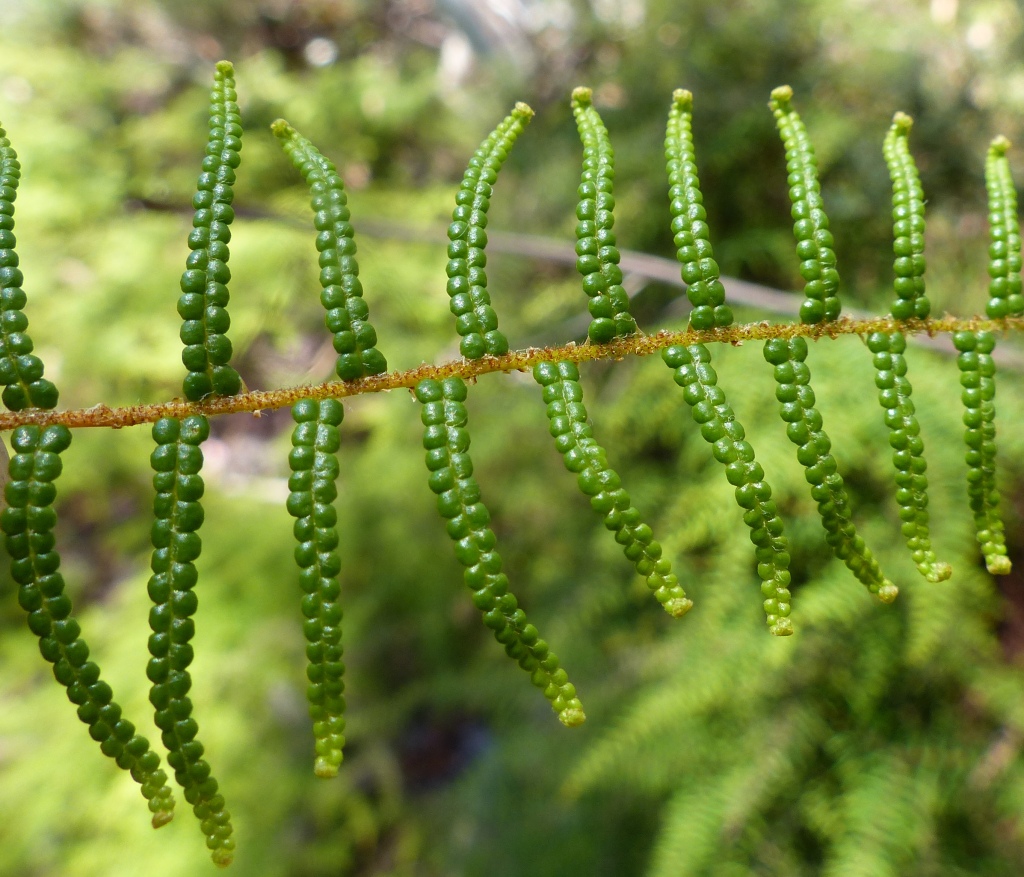Gleichenia dicarpa
R.Br. Pouched Coral-fernRachis of major branches cobwebby with membranous, fringed scales and numerous stellate hairs (flattened and not tufted as in G. microphylla). Ultimate branches linear, 2–5 cm long, with small, close-set pinnules; undersurface of pinna-rachis covered with small, pale, finely fringed scales; uncoiling tips (and young rachises) greyish-fawn, covered in fringed scales and soft hairs. Pinnules c. 2 mm long, almost semicircular, lower surface with margin strongly recurved to form a pouch. Sori with 2, rarely 1 or 3, sporangia, virtually enclosed within pouch; sporangia dull, yellowish-white.
Wim, GleP, VVP, VRiv, GipP, OtP, WaP, CVU, GGr, DunT, EGL, EGU, WPro, HSF, HNF, OtR, Strz, MonT, HFE, VAlp. Also NT, Qld, NSW, ACT, Tas. (including Flinders Is.). New Zealand, New Caledonia, Indonesia, Malaysia. On edges of wet forest, open creek beds, swamps or wet heathland, or between rocks in alpine areas where uncommon and the habit more compact.
The degree of 'pouching' in Gleichenia dicarpa varies between forms, from the margin being strongly recurved only in the apical half of the pinnule to the more typical form where the margin is recurved from all sides, almost completely obscuring the undersurface of the pinnule. The less recurved forms often have fewer scales on the undersurface of the pinna-rachis and more stellate hairs, rather than scales, on the main rachis. Such plants, from localities such as Wilsons Promontory, Mornington Peninsula, East Gippsland and Wallaby Creek, are somewhat intermediate between G. dicarpa and G. microphylla.
Entwisle, T.J. (1994). Ferns and allied plants (Psilophyta, Lycopodiophyta, Polypodiophyta). In: Walsh, N.G.; Entwisle, T.J., Flora of Victoria Vol. 2, Ferns and Allied Plants, Conifers and Monocotyledons, pp. 13–111. Inkata Press, Melbourne.
 Spinning
Spinning


